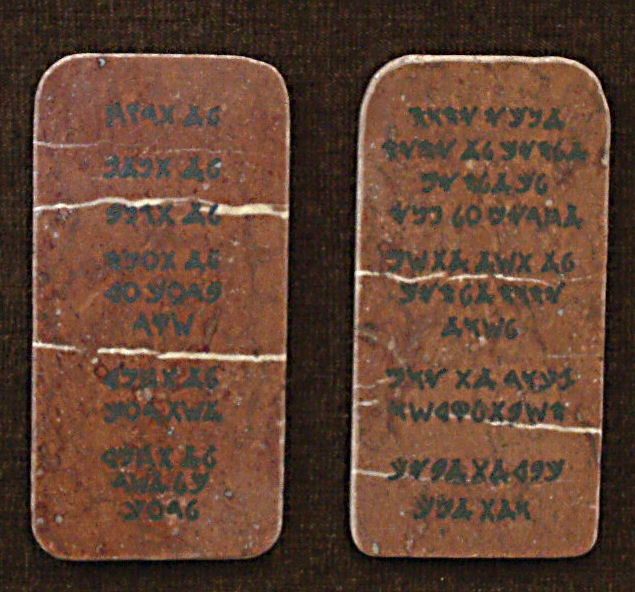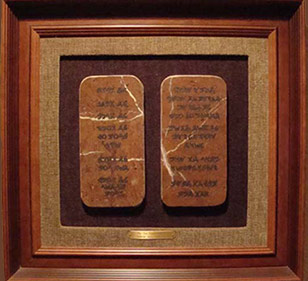The Ten Commandments
We do not know what the Ten Commandments looked like when Moses brought them down from Mount Sinai. No one living today has ever seen the Ten Commandments as Moses presented them in circa 1300 BCE. There is much scholarly speculation about the subject, some speculation seeming better than others.
We present our Ten Commandments in a Proto Hebraic called Ktav Ivri, as a likely possibility. The Hebrew language developed over a period of time and arguably began as Canaanite pictograms; later influences of Phoenician were absorbed. One of the developing aleph bet’s used in the Sinai, circa 1300 BCE, and one Moses, educated as an Egyptian, would be familiar with, called Ktav Ivri, has been back translated from the Koine Greek we see used in the Septuagint at the time of Christ. The original has not been seen since it, the Ark of the Covenant, Aaron’s rod and a container preserving a sample of the Manna were hidden by the holy prophet Jeremiah somewhere on Mt Sinai. Jeremiah told his cadre that the Ark and its contents would remain hidden until The Lord chose to reveal them at some time in the distant future.
Ktav Ivri is written right to left. From the reader’s perspective the first tablet of the first five commandments is on the right, the second tablet containing the next five commandments is on the left.
The red marble we have used can be found in the Sinai. Though we cannot be sure what language the original Decalogue was written in the aleph bet we have used is a very good possibility. The back translation from the Koine Greek of the Septuagint into the Proto Hebraic Ktav Ivri is credible and not disputed by modern Jewish, Catholic, or Protestant
scholars.

The Ten Commandments
All prices include shipping cost.

